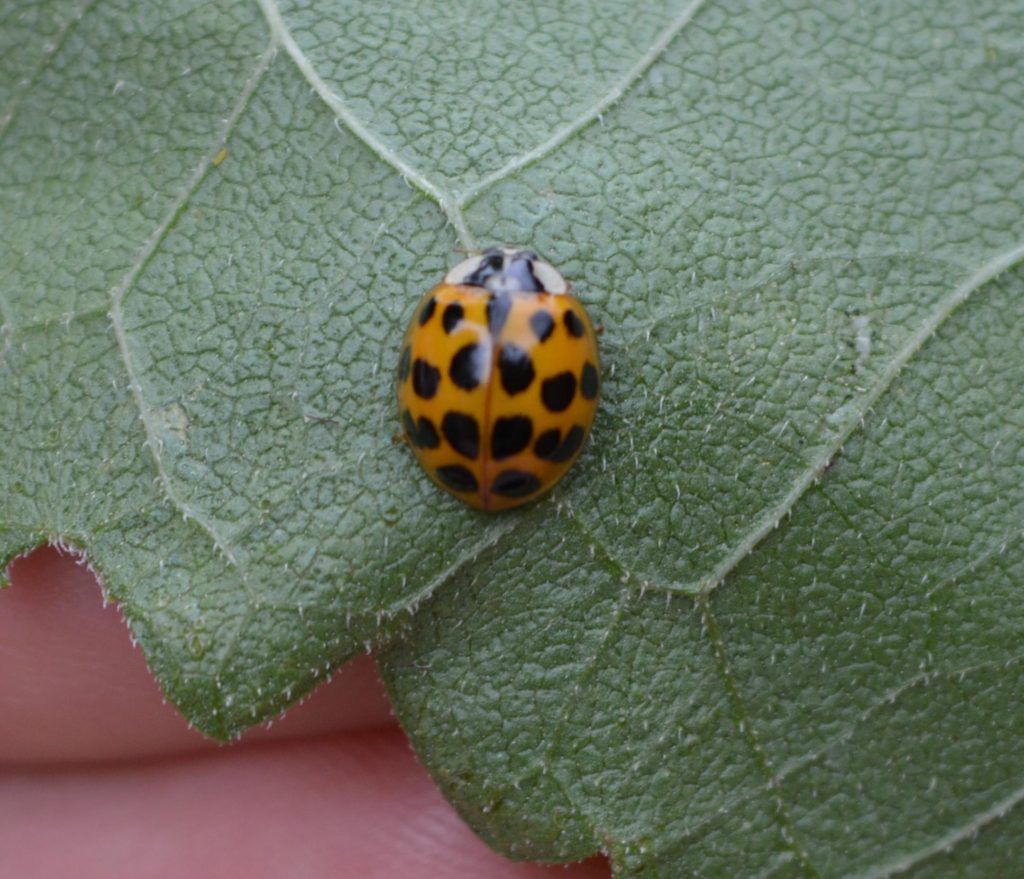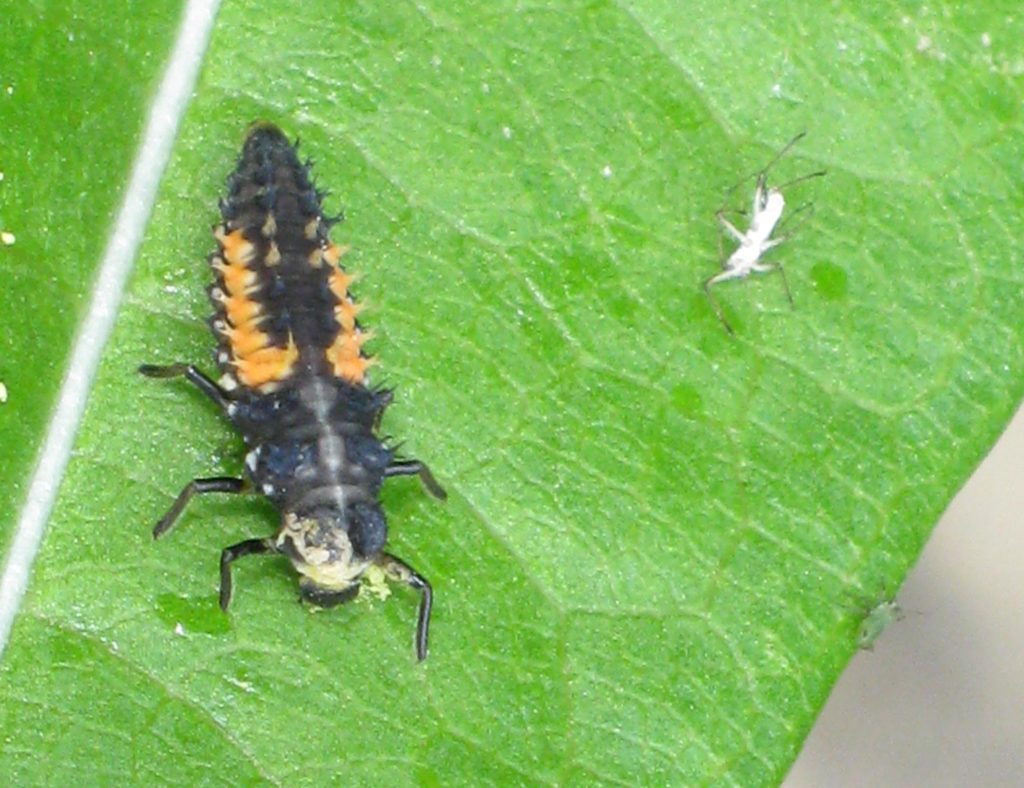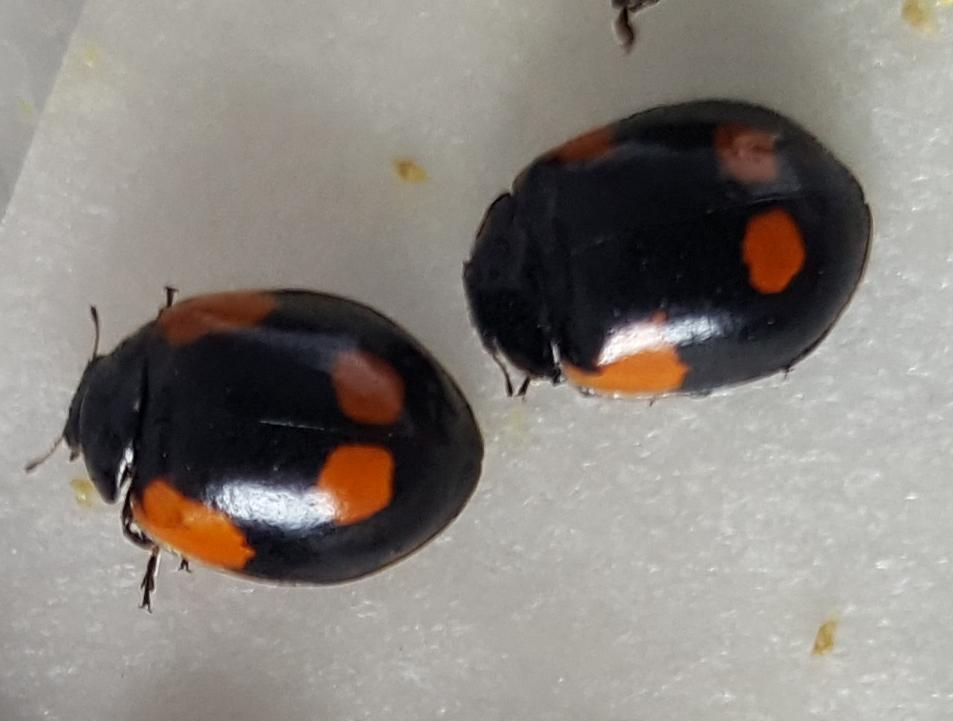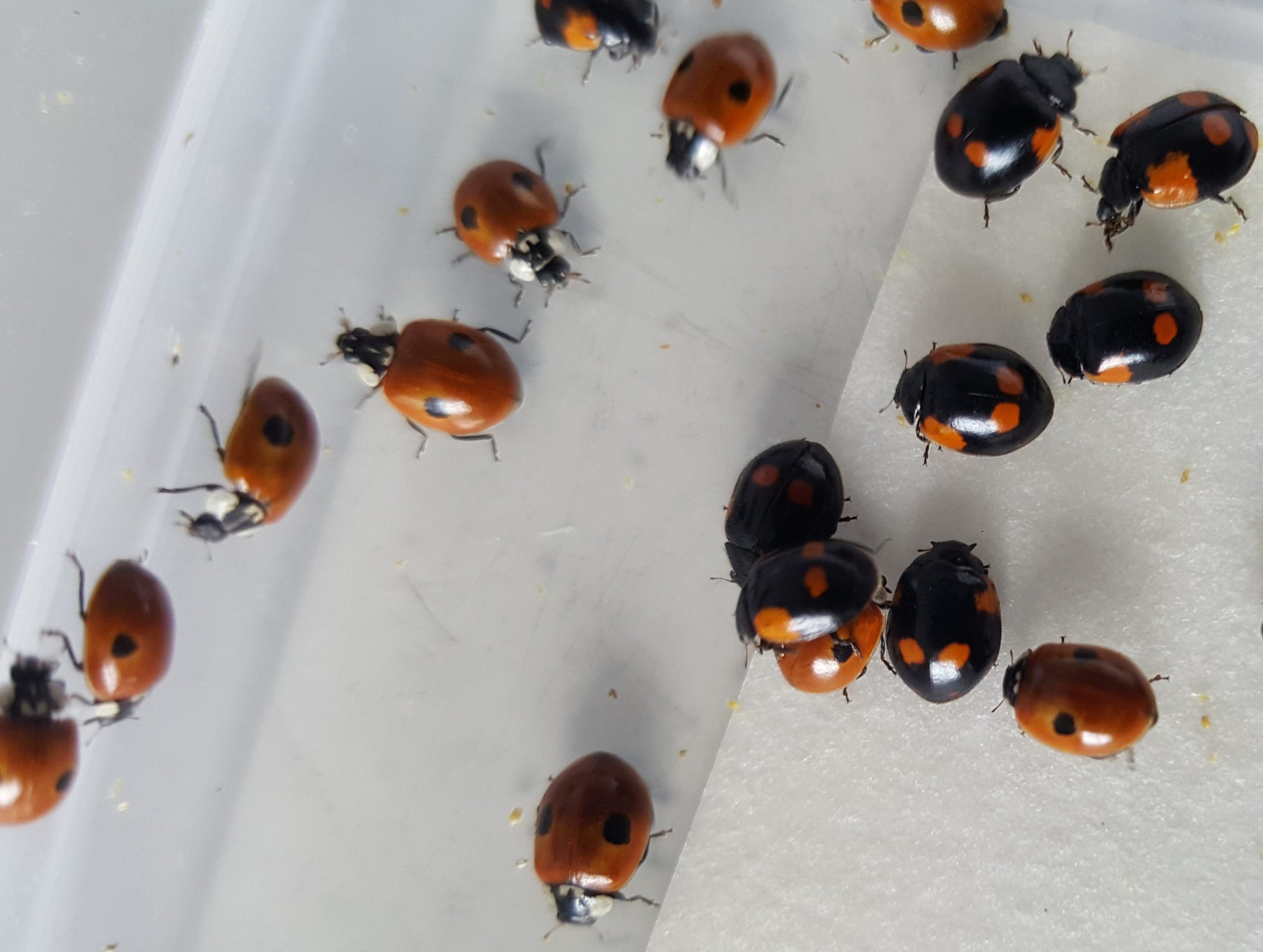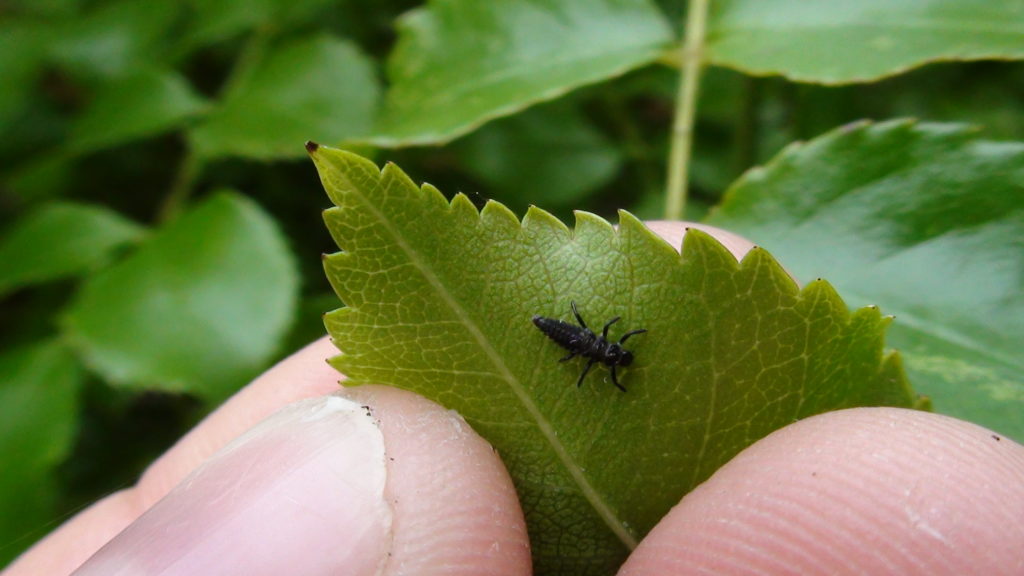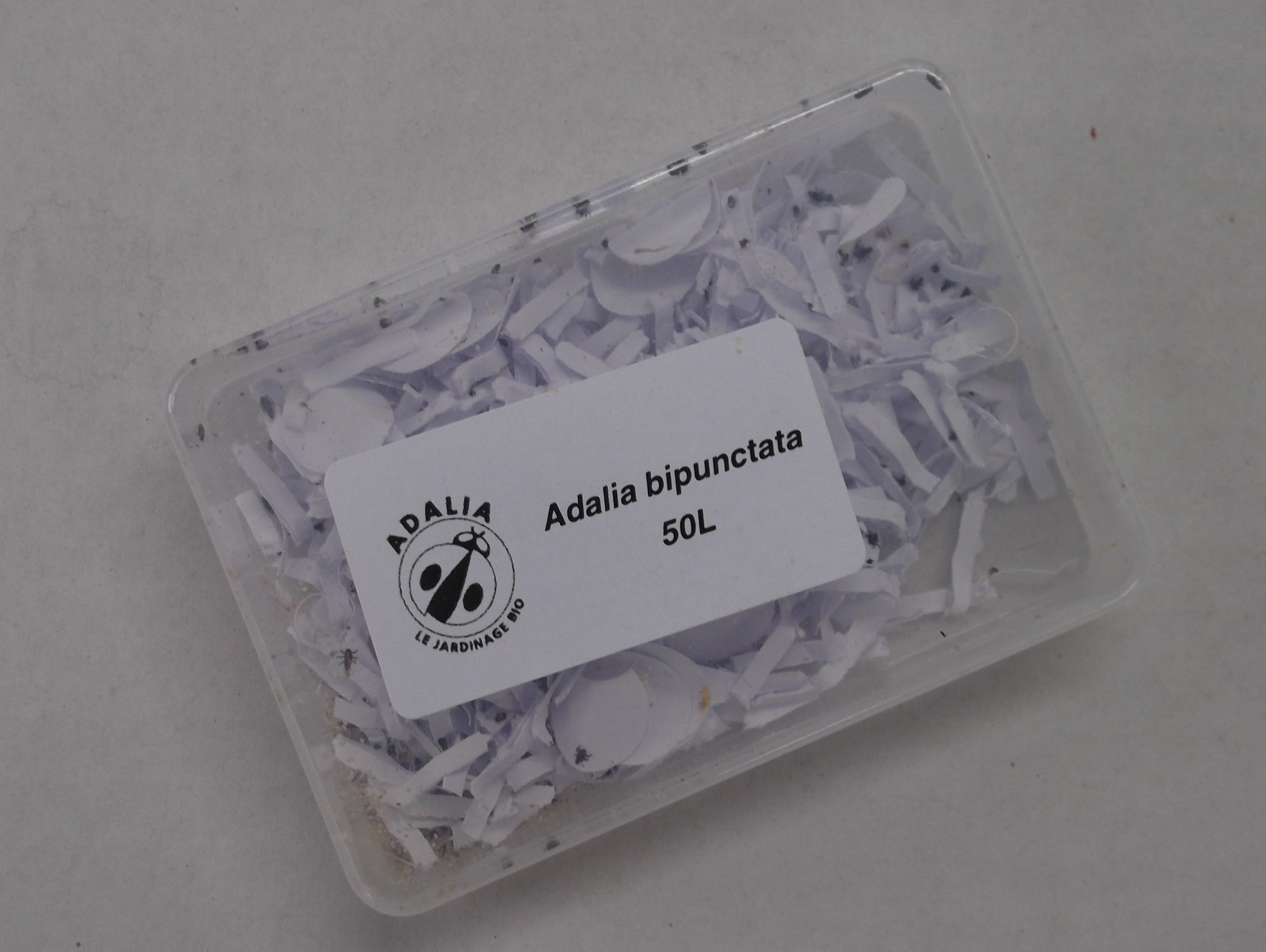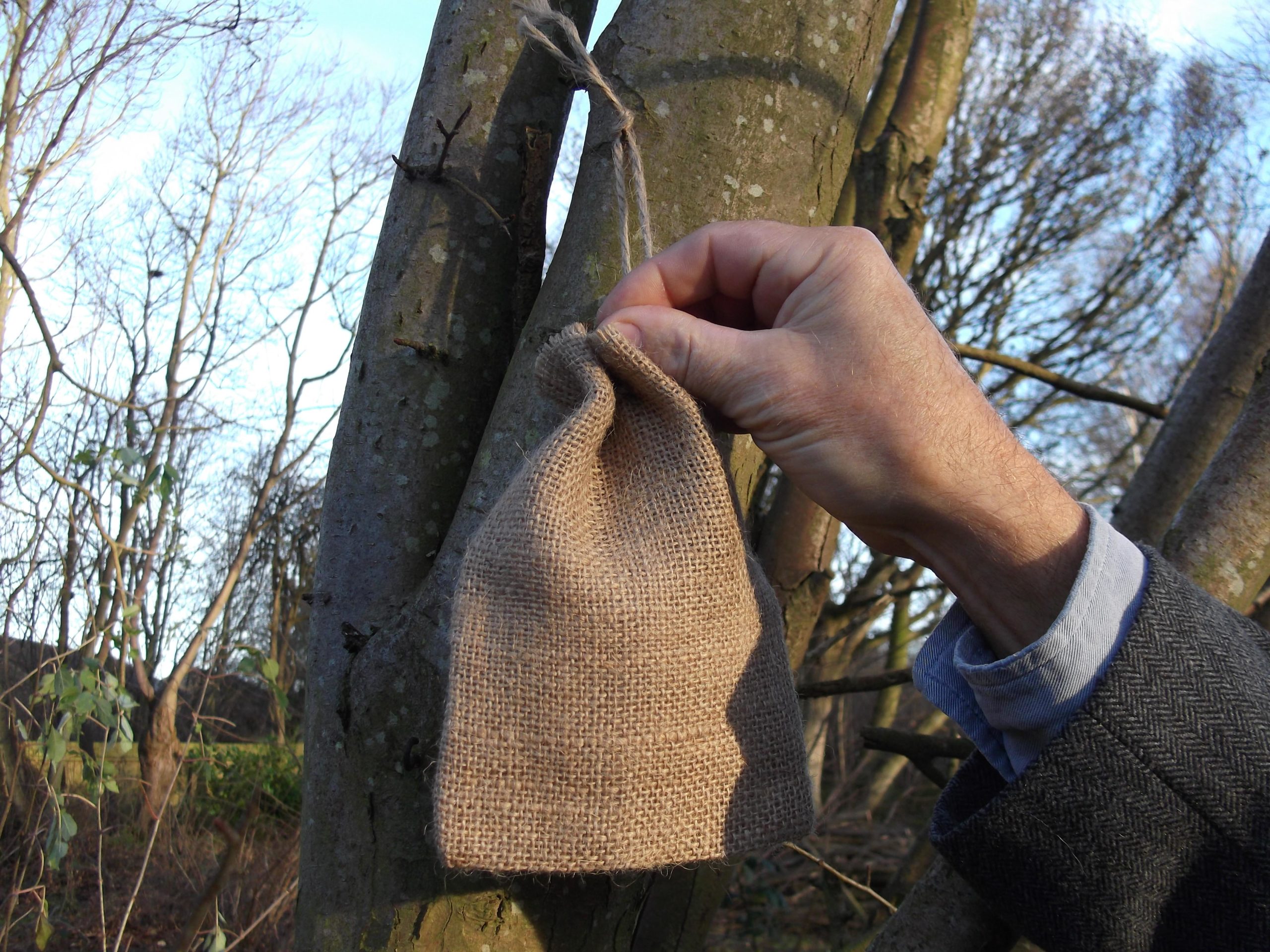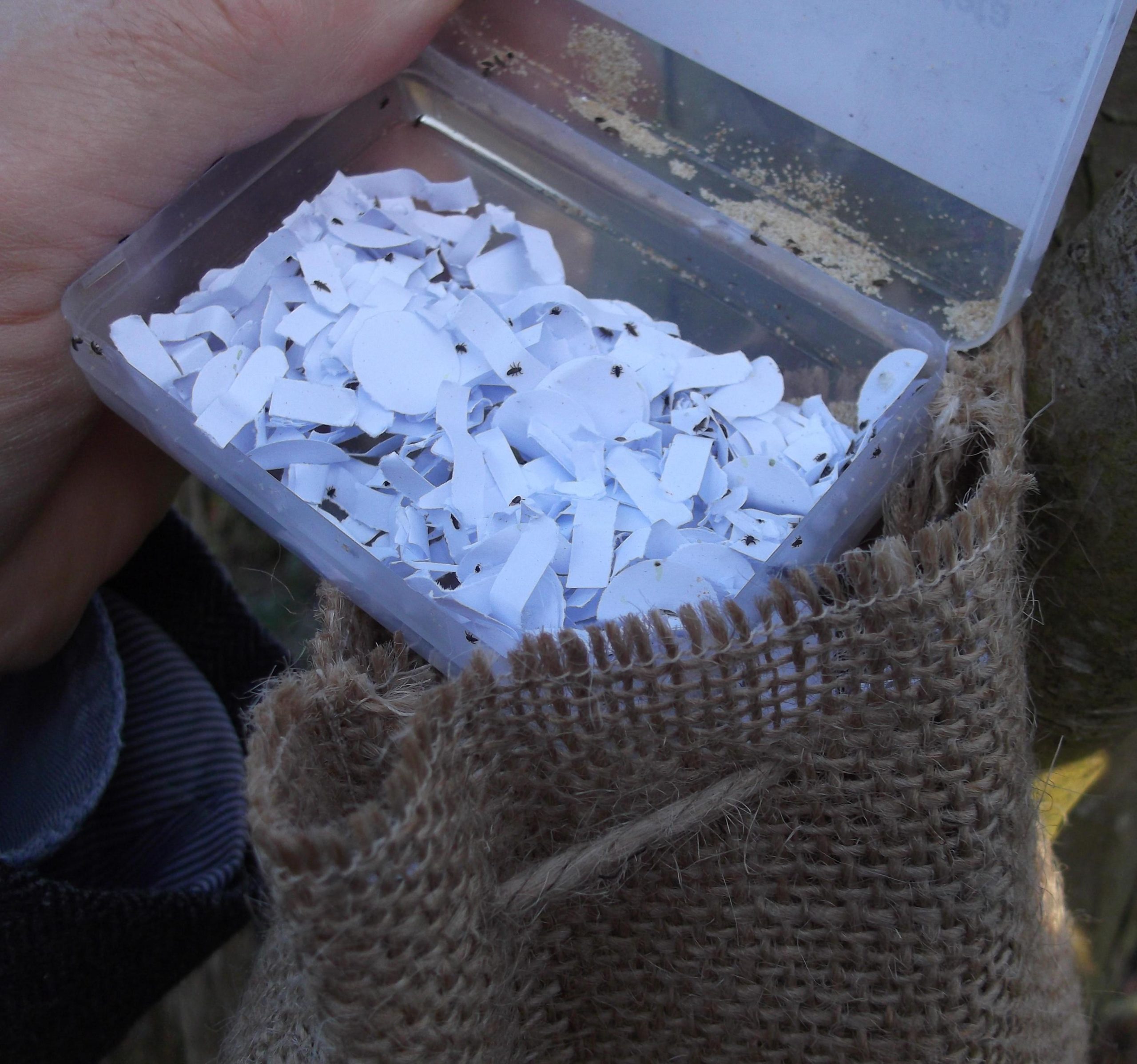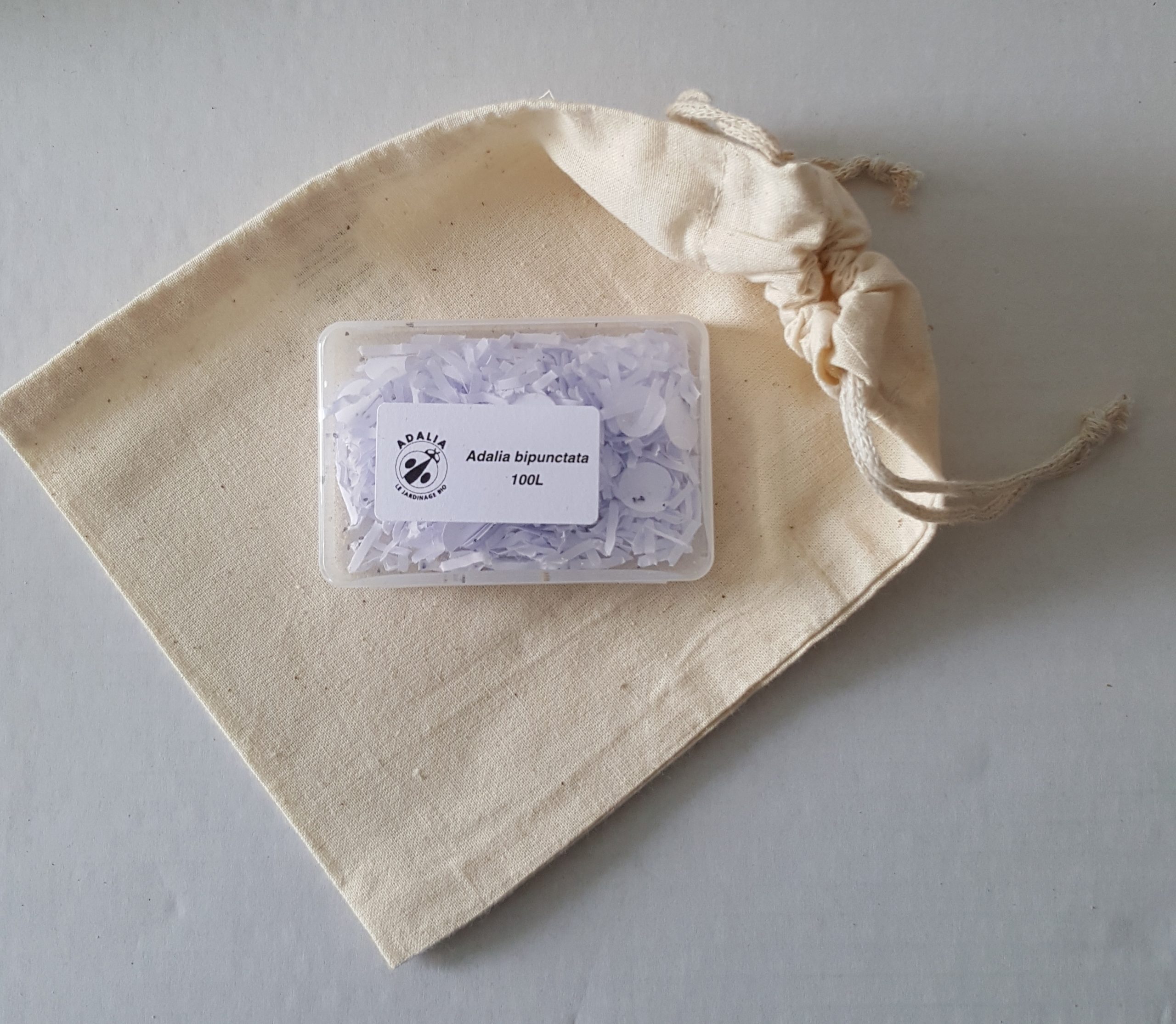6 November 2019
Harlequin Ladybirds
One of the things I get the most questions about at this time of year is Harlequin Ladybirds, so I thought I would answer some of these questions as a BLOG about how to identify them, why they are a problem, what to do with them if you find them in your garden and how to help our native ladybirds.
Typical Question – “Hi Jon, it was good to talk to you on the phone about Harlequin ladybirds and as suggested here are pictures of what I have found in my back garden (there are lots of them), so hopefully you can confirm if you think they are harlequins.”
A. Thanks for the message and they certainly looks like a Harlequin Ladybirds to me. Harlequin ladybirds vary enormously in appearance, which can make them difficult to tell apart from our native ladybirds. Harlequins are larger than our native ladybirds and can be up to 1cm in length – if a ladybird is less than 5mm then it is NOT a harlequin. The 2 most common colourings for Harlequins are orange with 21 black spots or black with two red spots – not to be confused with the melanic form of the 2-spot ladybird, which we supply, which is black with four or six red spots! The larvae are much larger as well reaching up to about 1cm in length, have two orange stripes and are spikey. The only native ladybird which is similar in size to a Harlequin Ladybird is the 7-spot Ladybird, but only the 7 spot ladybird has exactly 7 spots! In summary, Harlequin Ladybirds can be red, orange or black and will have between 0 – 21 spot. It will also have brown legs.
Q. “I have ordered ladybirds from you, but am concerned about
Harlequin ladybirds. Some of the ladybirds I received are black with red spots, so are these native ladybirds (it says Adalia bipunctata on the packaging) or are they Harlequins – I thought if they were black with red spots then they were Harlequins. I have lots of aphids, so I want to use ladybirds, but I do not want to release Harlequins? I also do not like the idea of them being taken from the countryside, so are your ladybirds bred especially or caught for you?” Joe by email.
A. Please let me re-assure you that we ONLY supply native British Adalia bipunctata ladybirds – we do NOT supply Harlequin ladybirds. These ladybirds are bred especially for us and are not harvested from the wild. As previously mentioned, Harlequin ladybirds do vary in colour and can be black (normally with 2 red spots), but our native Adalia bipuctata can also be black – they are called a melanic 2 spot ladybird if they are black and despite its 2 spot name it normally has four or six red spots, two of which are right on the edge of its body normally towards the front (pictured top left). This is why identifying ladybirds can be quite hard! When you receive your ladybirds they will all be NATIVE Adalia bipunctata, but there will be a mixture of red ones with 2 spots and the black melanic ladybirds with 4 or 6 red spots.
Q. “Help – I have just found what are loads of Harlequin Ladybirds in my garden and I do not know what to do! Am I meant to destroy them as I am not sure I can do that or should I catch them and take them somewhere? I have seen recent press articles that say they are bad, but I am not sure why and none of these articles say what to do if you find them. Please any help, advice you can give will be much appreciated.” Joan via email
A. Thanks for the message and you do not need to become a mass murderer and you can leave them to it as they will eat your aphids. The Harlequin is becoming a problem because of its size, its voracious appetite (including beneficial insects) and its ability to breed throughout the spring, summer and autumn. The Harlequin Ladybird was introduced from Asia to North America in the 1980s to control aphids in crops and quickly spread across the United States. It was then introduced into Europe to control aphids in the same way before arriving in Britain in 2004 – possibly blown over by strong winds. Like other ladybirds, the Harlequin eats aphids and this was the reason why it was introduced into food crops, BUT unlike other ladybirds, once the aphids have run out it will then start feeding on the eggs of caterpillars, moths and butterflies PLUS it will even attack the eggs and larvae of our NATIVE ladybirds. The main reason Harlequin ladybirds pose a threat to our native ladybirds is that they can easily out-compete our native ladybirds for food and then once that food runs out they will eat our ladybirds as well. The Harlequin Ladybird is here to stay and with no means of controlling harlequin ladybirds, without harming our native ladybirds it is important to encourage our NATIVE ladybirds – a scarce seven spot ladybird spotted in my garden pictured below :-
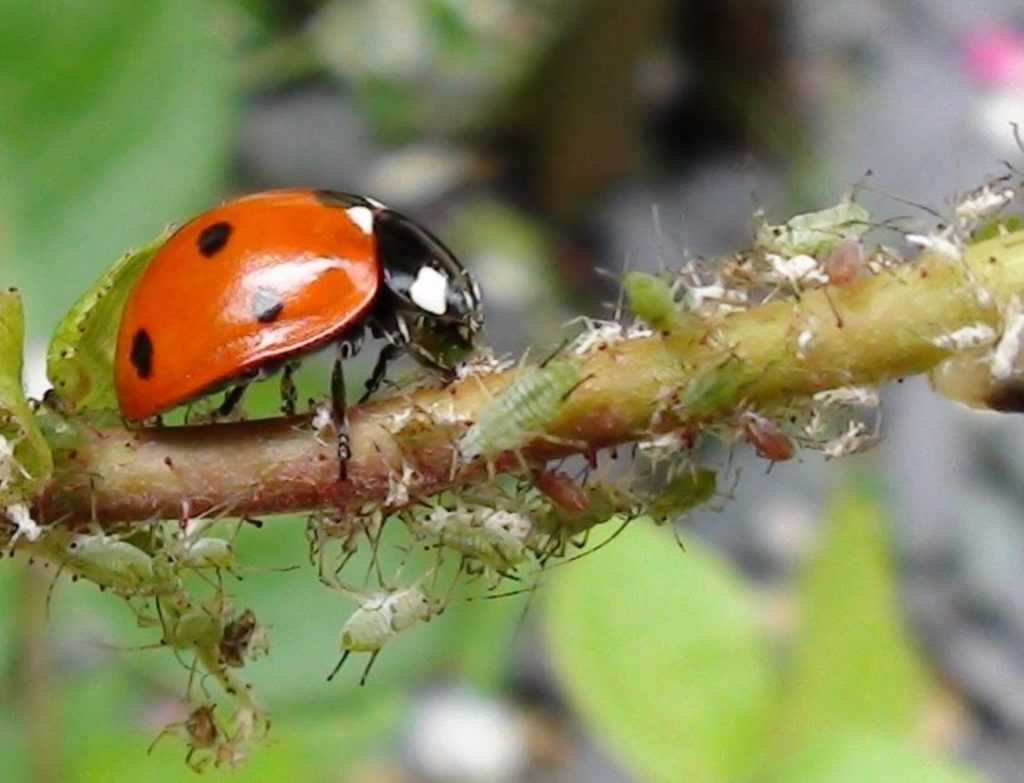
Native Adalia bipunctata Ladybirds are available from Green Gardener as adults or as larvae – Harlequin ladybirds are here to stay and while there is a lot of food about i.e. aphids releasing our native ladybirds into your garden will help boost their numbers. We have BOTH adults & ladybird larvae ready for release in your garden – we ONLY supply NATIVE BRITISH Adalia bipunctata ladybirds. Releasing ladybirds will increase their numbers & help control the aphids in your garden – each ladybird will eat 5000 aphids. The ladybirds will then quickly breed to produce larvae, which will also eat aphids.
Adult Ladybirds – We supply packs of 25 adult ladybirds ready for release onto aphid infected plants or dotted around the garden. Once released, they will feed on insect pests i.e. aphids before breeding and producing the next generation. CLICK HERE to find out more about Adult Ladybirds.
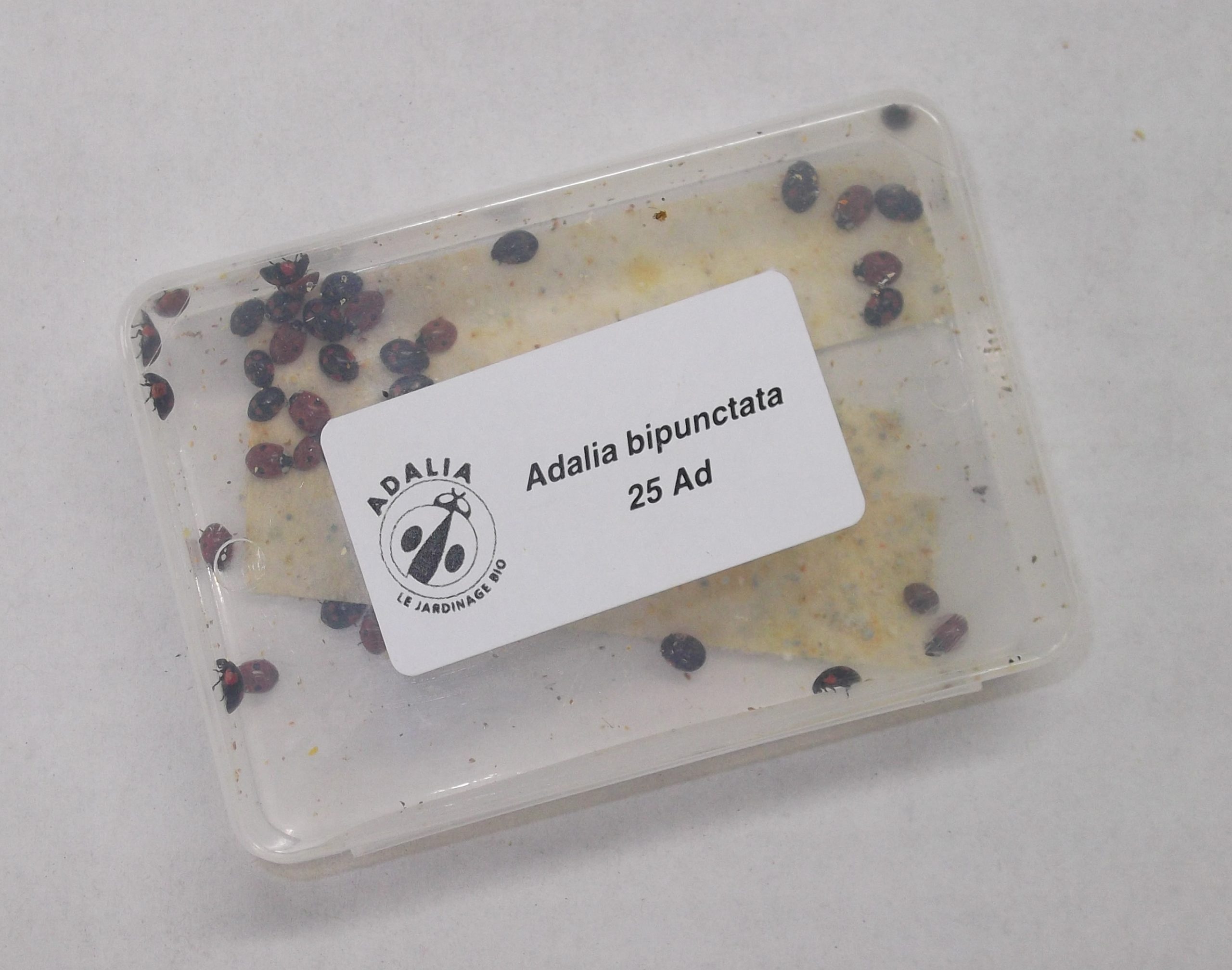
Ladybird larvae – Supplied in packs of 50, Ladybird larvae are unable to fly, so they are ideal for releasing onto aphid infected plants, as they will stay put feeding on aphids before pupating and turning into adult ladybirds. Both the larvae and adults feed on aphids and other soft-bodied pests. CLICK HERE to find out more about Ladybird Larvae.
Ladybird Larvae in release bags – It can be difficult to get ladybird larvae into trees and hedges, so our packs of 100 ladybird larvae with cotton release bags are the easy way to introduce ladybird larvae into conifers, trees and hedges. Use them to control aphids in hard to reach places. CLICK HERE to find out more about Ladybird larvae with Release Bags.
Positioning ladybird houses – Adult ladybirds are dormant during the winter i.e. Oct- Feb. In the autumn they will find a suitable over-wintering site & then excrete a pheromone to attract other ladybirds & this is why you often find them grouped together. In the winter people often discover ladybirds in their houses, but this isn’t the best place for them to hibernate as central heating can wake them up prematurely. If they wake up in the middle of winter and there isn’t any food for them i.e. aphids then they will starve to death. If you discover ladybirds in your house during the winter, it is a good idea to carefully move them outside into a frost-free spot, which is safe from predators – a ladybird house is ideal, but a shed or garage is OK. Positioning a ladybird house will encourage ladybirds to feed, breed & over-winter in your garden. Our range of ladybird houses provide safe, dry environments for ladybirds to over-winter in.
Ladybird Lodge – Featuring a hinged lid, this means it is easy to add live ladybirds into i.e. simply lift the lid, tip the ladybirds in, position amongst your plants and wait for them to emerge. Featuring a central chamber, drilled holes and hollow canes, it will provide shelter for ladybirds PLUS lacewings, bees and even butterflies may use it as well. Made from FSC timber from sustainable sources, the thick log walls provide a well-insulated & cosy home for ladybirds & other beneficial insects. The Ladybird Lodge is designed to be wall-mounted, so position on a wall, tree or fence amongst climbing plants, which are affected by aphids.
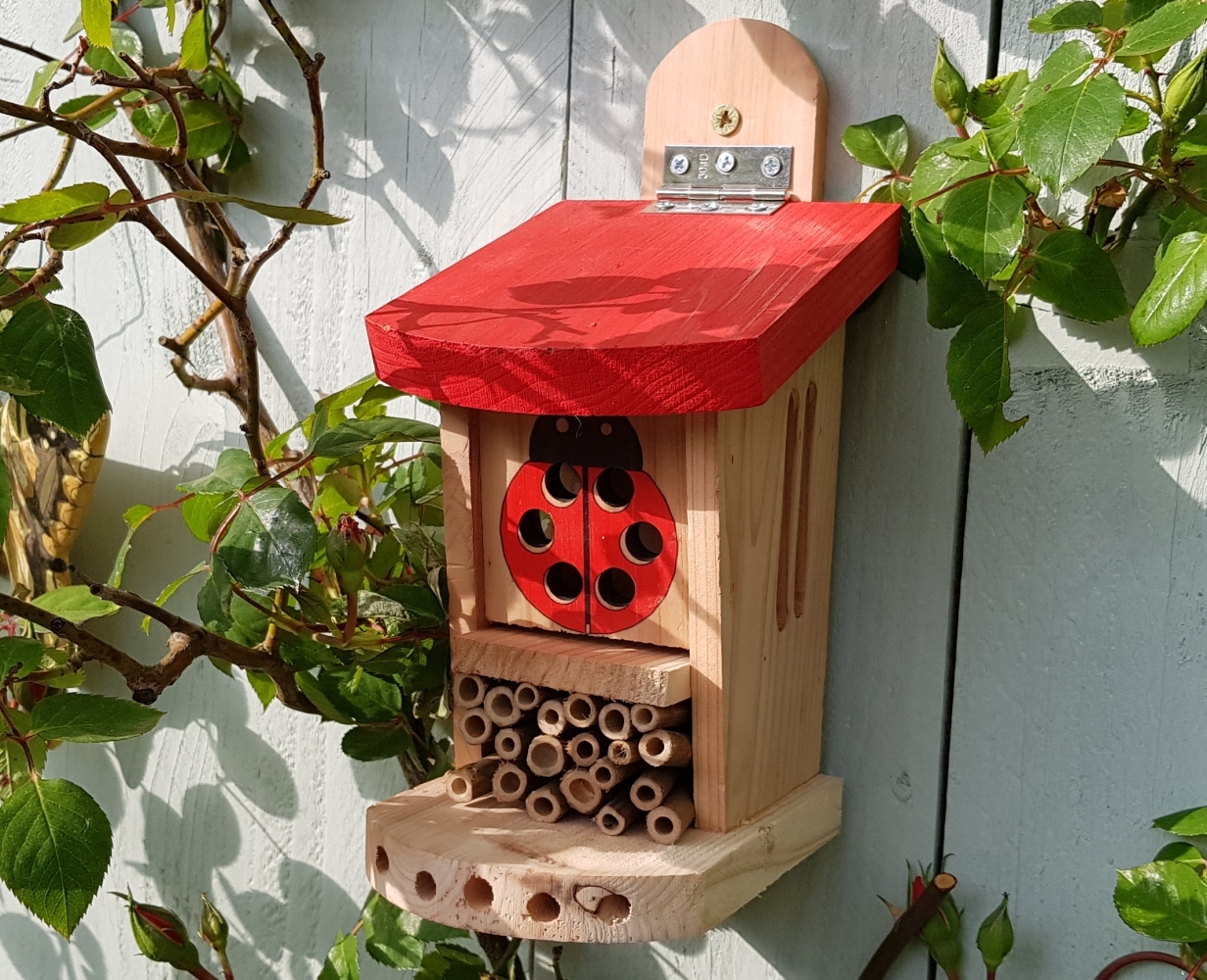
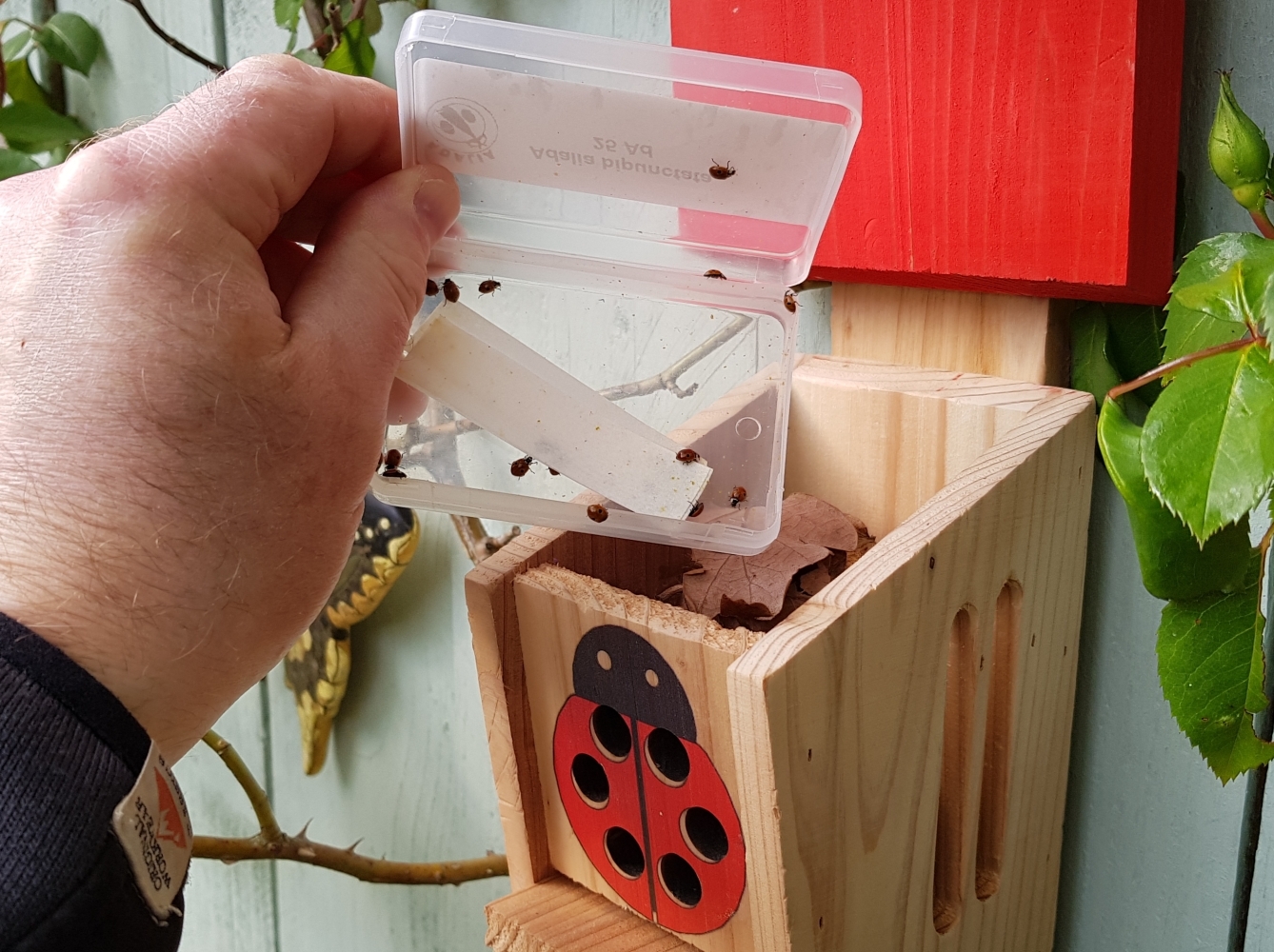
Ladybird attractant and food – Mix this food & attractant powder with a drop of water & use in the garden or in one of our ladybird houses. Use it when food becomes scarce to encourage ladybirds to stay in your garden i.e. use during the autumn and spring when ladybirds are active and food can be scarce. CLICK HERE to find out more about Ladybird Food.
Ladybird Feeders – Use these bamboo Ladybird Feeders and Food to attract and keep ladybirds in your garden. Supplied as a pack of 2 with a sachet of food, simply mix the powdered food with a drop of water to form a paste and smear on the inside of the feeders. Thread each feeder with the cord provided and then suspend approx 1m above the ground in areas where ladybird hibernate i.e. next to low conifers and ivy clad walls / fences. Perfect for offering food to hungry ladybirds emerging from hibernation or for offering food later in the year when food is becoming scarce. Add more food as needed or it is a good idea to clean the feeders out and add fresh food every 3-4 weeks. These Ladybird Feeders are supplied in a TWIN PACK with a sachet of food. N.B. Extra Ladybird Food is available all year round. CLICK HERE to find out more about Ladybird Feeders
Available to buy now
Adult Ladybirds x50
Buy Adult Ladybirds for Your Garden Ladybirds are a welcome sight in the garden, where they happily munch away on…
Ladybird Family Offer
Release ladybirds into your garden to tackle pest problems i.e. aphids on roses, or simply to boost the numbers of…
Ladybird Larvae x50
Control pests like aphids (greenfly and blackfly) naturally by releasing Ladybird larvae. Ladybird Larvae have a huge appetite for soft-bodied…
British Ladybird Larvae x100 with Release Bags
Aphids attacking trees can be a BIG problem (the 1st visible symptom of attack is large amounts of sticky honeydew which drips down on to…
